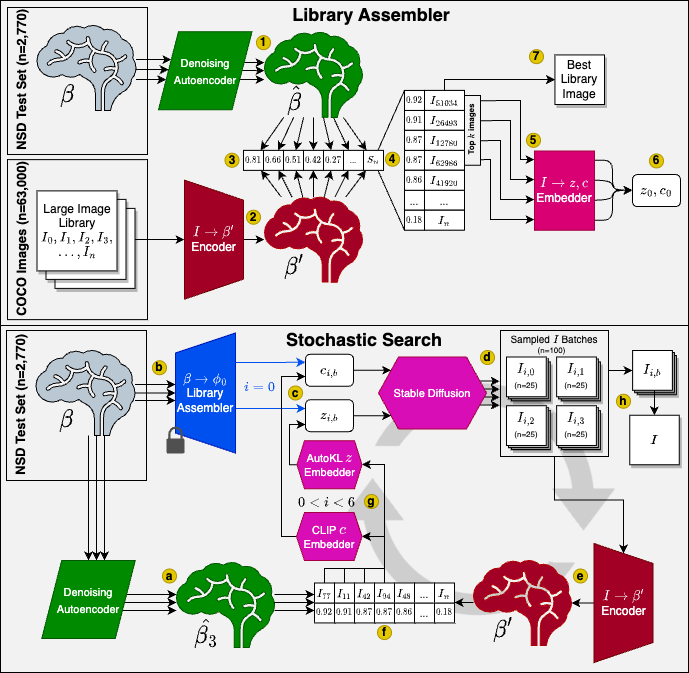Second Sight: Using brain-optimized encoding models to align image distributions with human brain activity
Two recent developments have accelerated progress in image reconstruction from human brain activity: large datasets that offer samples of brain activity in response to many thousands of natural scenes, and the open-sourcing of powerful stochastic image-generators that accept both low- and high-level guidance. Most work in this space has focused on obtaining point estimates of the target image, with the ultimate goal of approximating literal pixel-wise reconstructions of target images from the brain activity patterns they evoke. This emphasis belies the fact that there is always a family of images that are equally compatible with any evoked brain activity pattern, and the fact that many image-generators are inherently stochastic and do not by themselves offer a method for selecting the single best reconstruction from among the samples they generate. We introduce a novel reconstruction procedure (Second Sight) that iteratively refines an image distribution to explicitly maximize the alignment between the predictions of a voxel-wise encoding model and the brain activity patterns evoked by any target image. We show that our process converges on a distribution of high-quality reconstructions by refining both semantic content and low-level image details across iterations. Images sampled from these converged image distributions are competitive with state-of-the-art reconstruction algorithms. Interestingly, the time-to-convergence varies systematically across visual cortex, with earlier visual areas generally taking longer and converging on narrower image distributions, relative to higher-level brain areas. Second Sight thus offers a succinct and novel method for exploring the diversity of representations across visual brain areas.
PDF Abstract



 MS COCO
MS COCO
 LAION-5B
LAION-5B